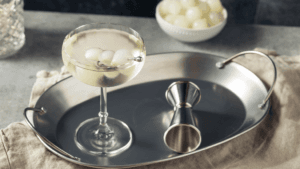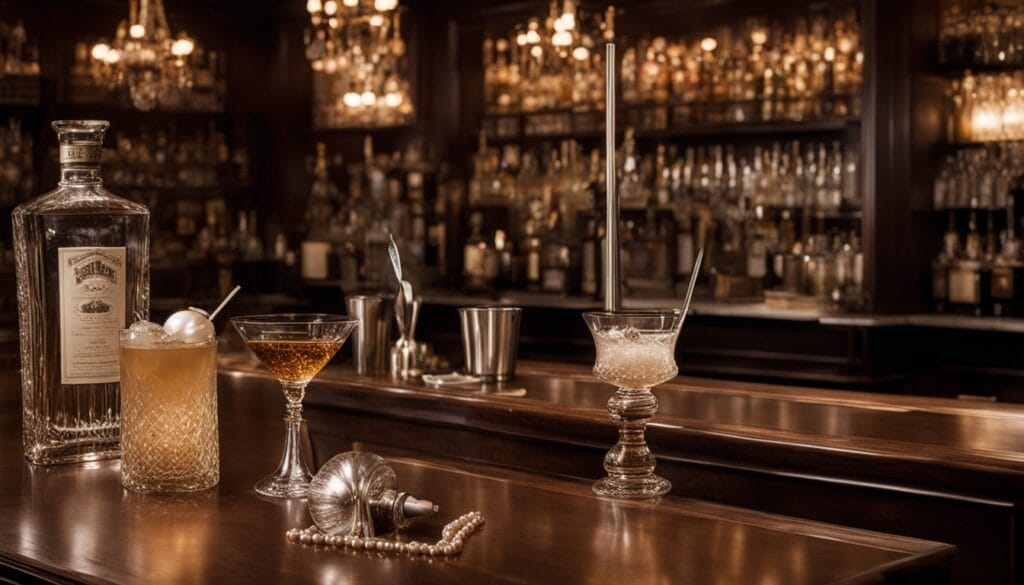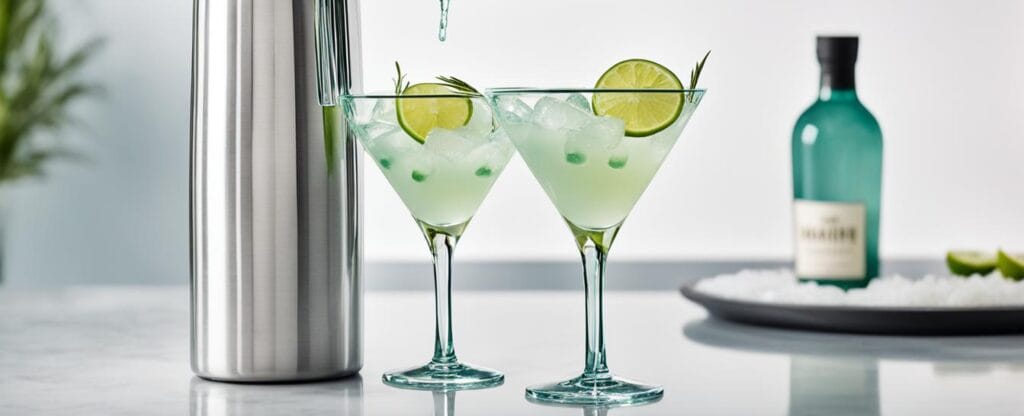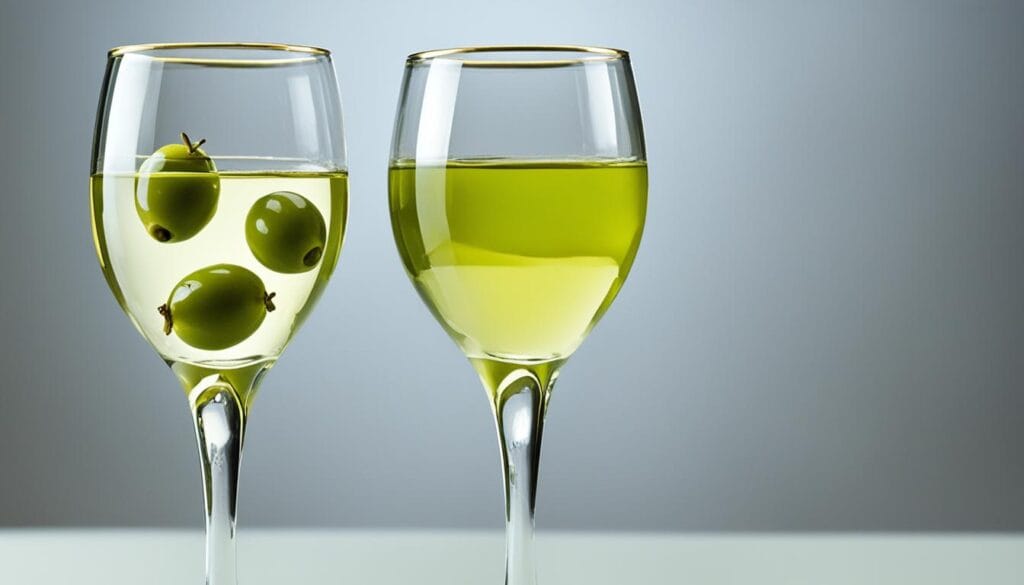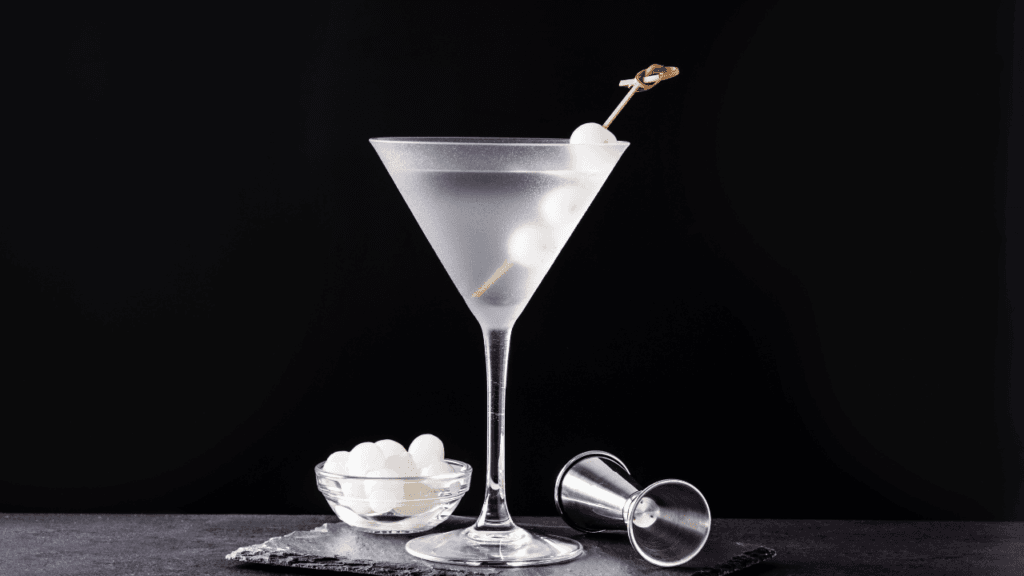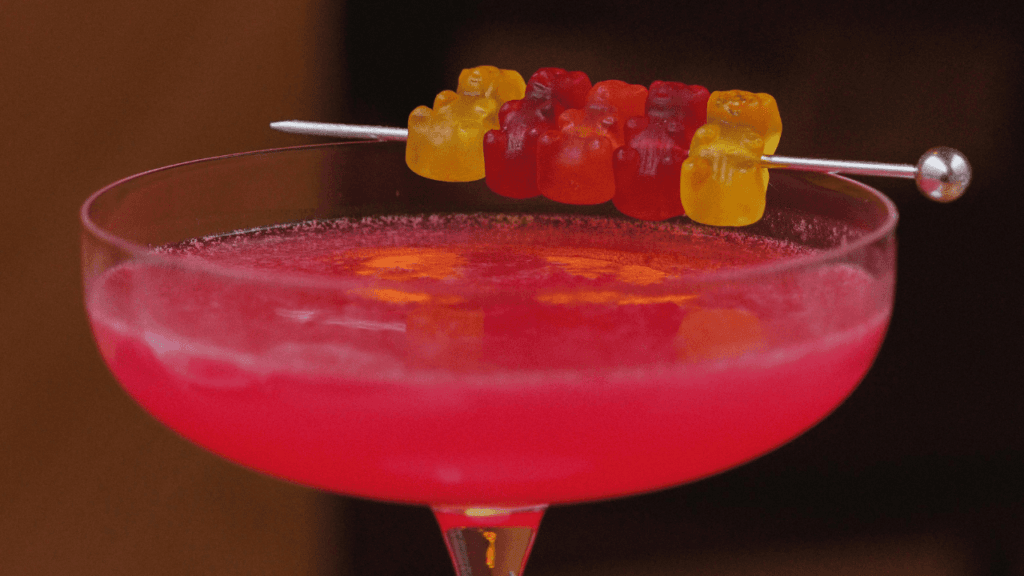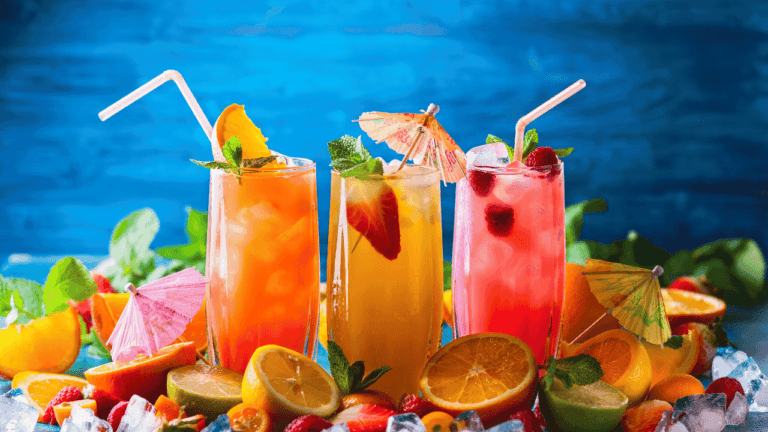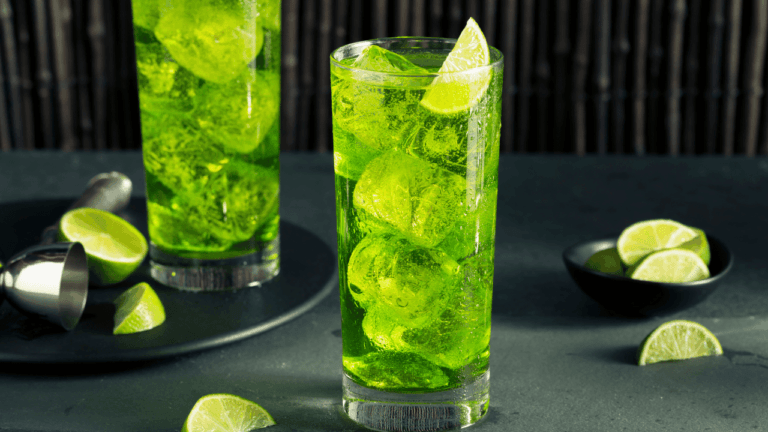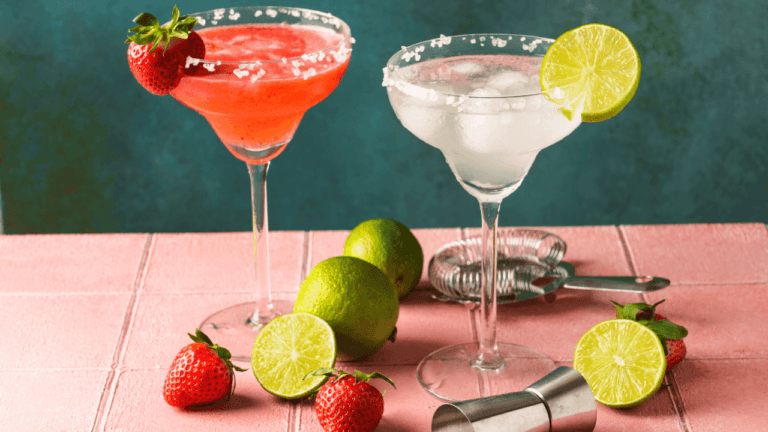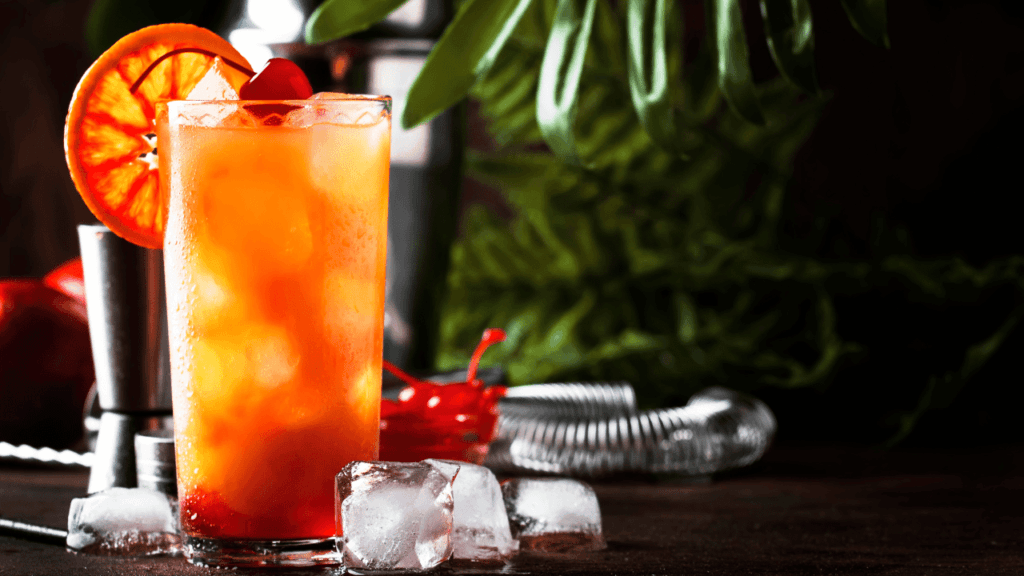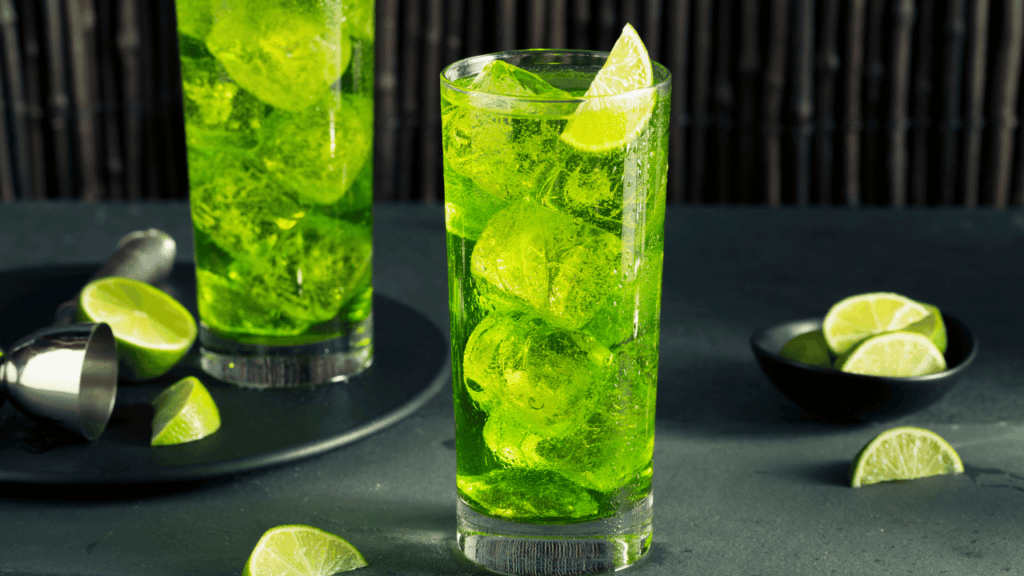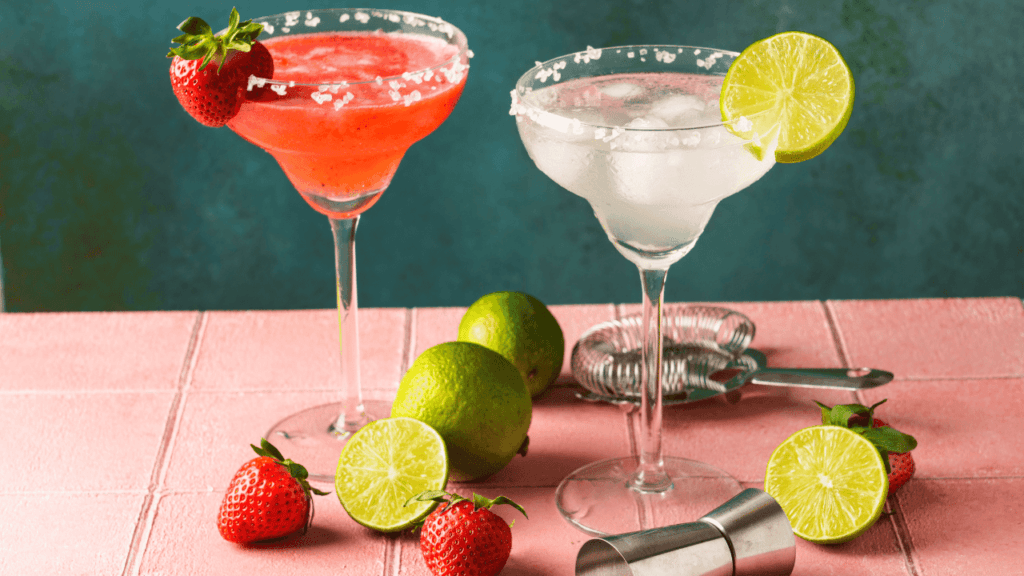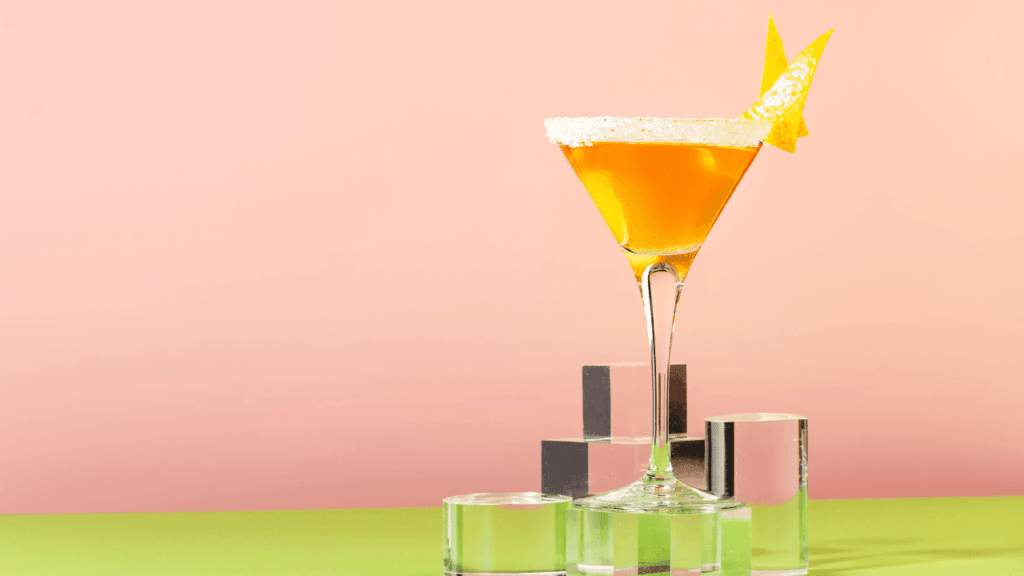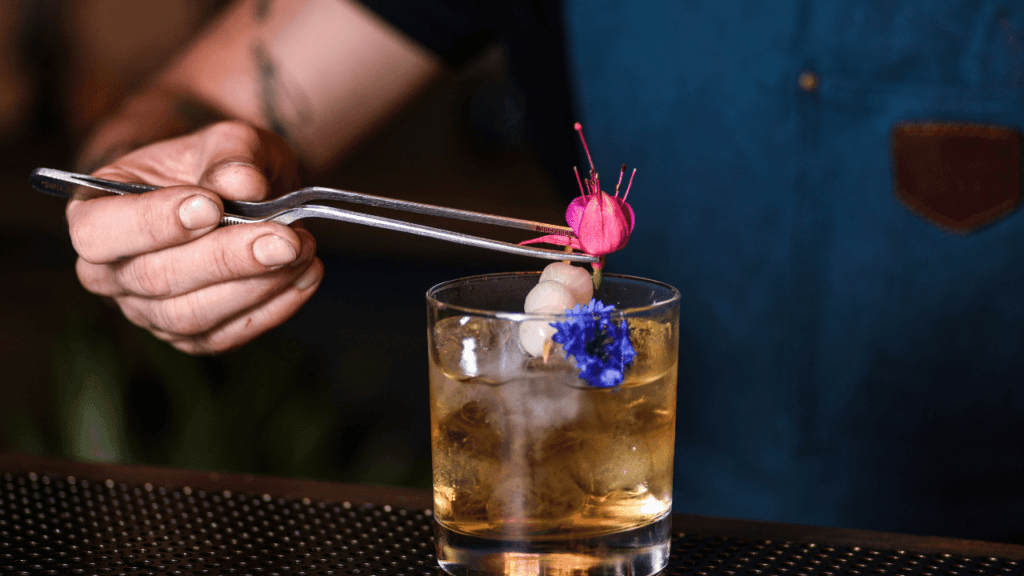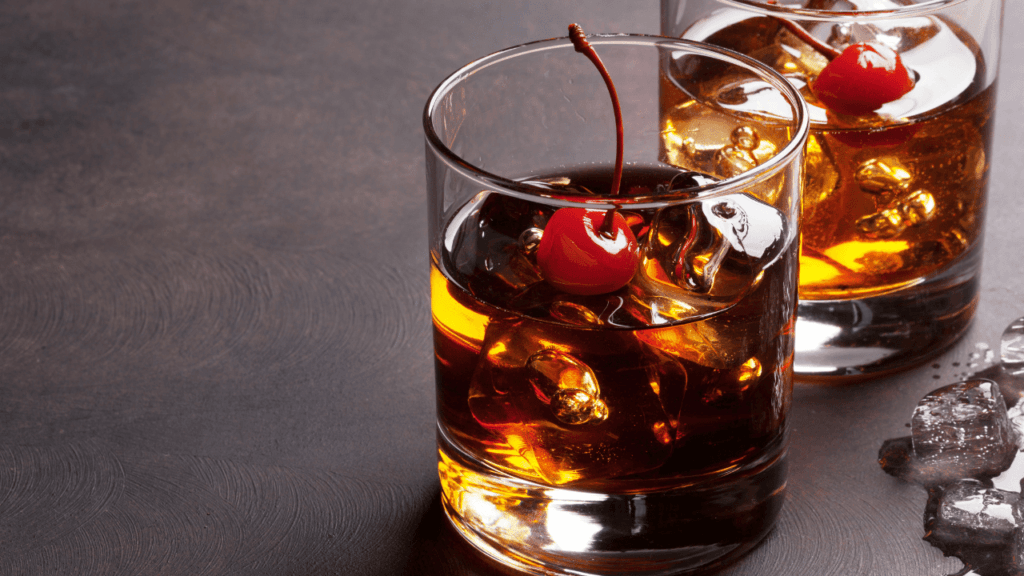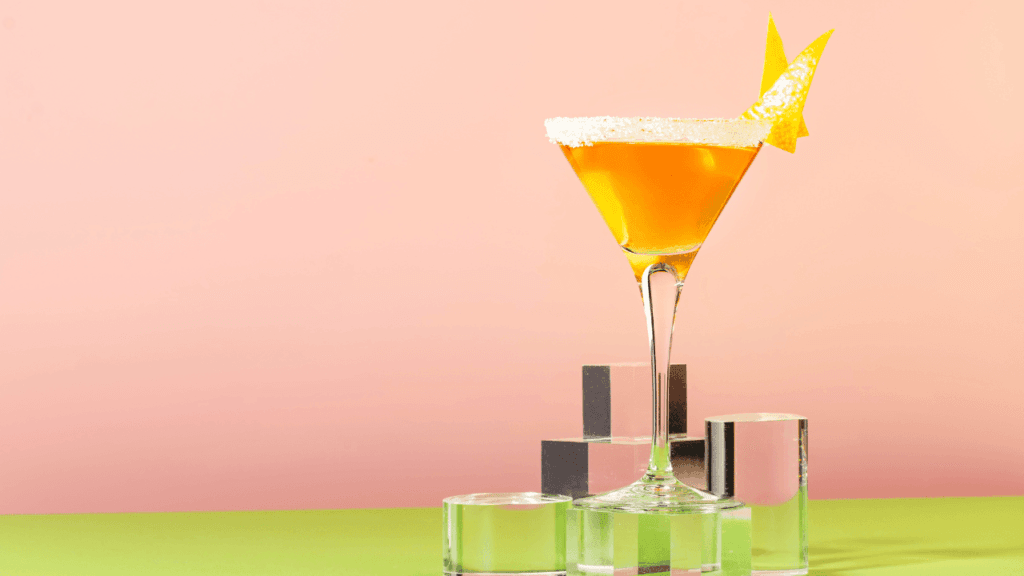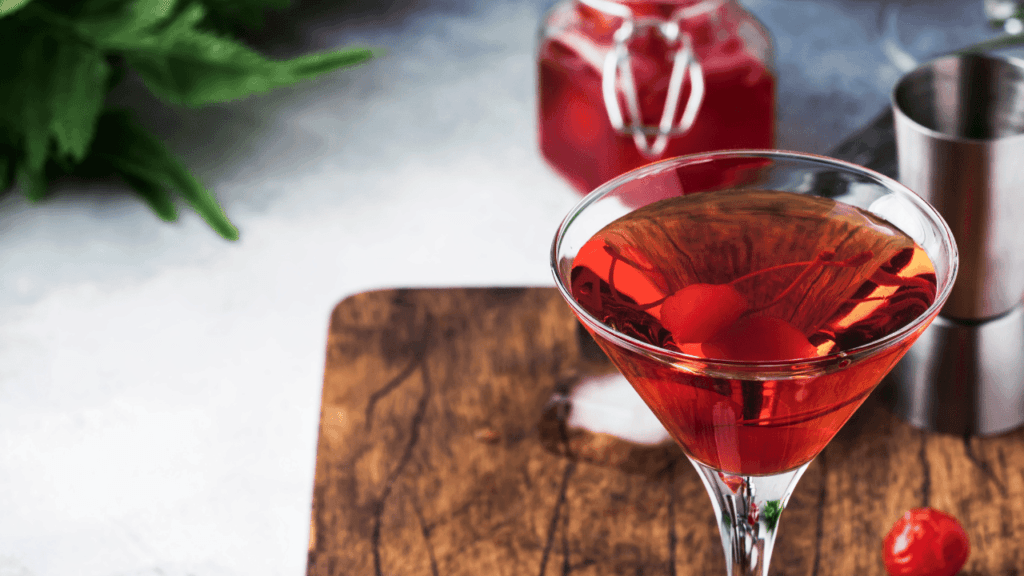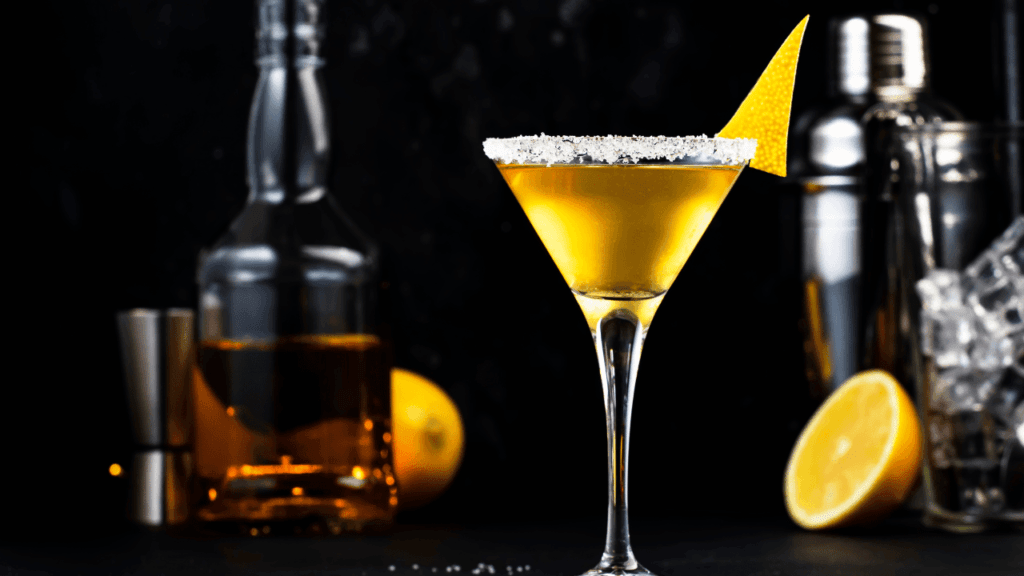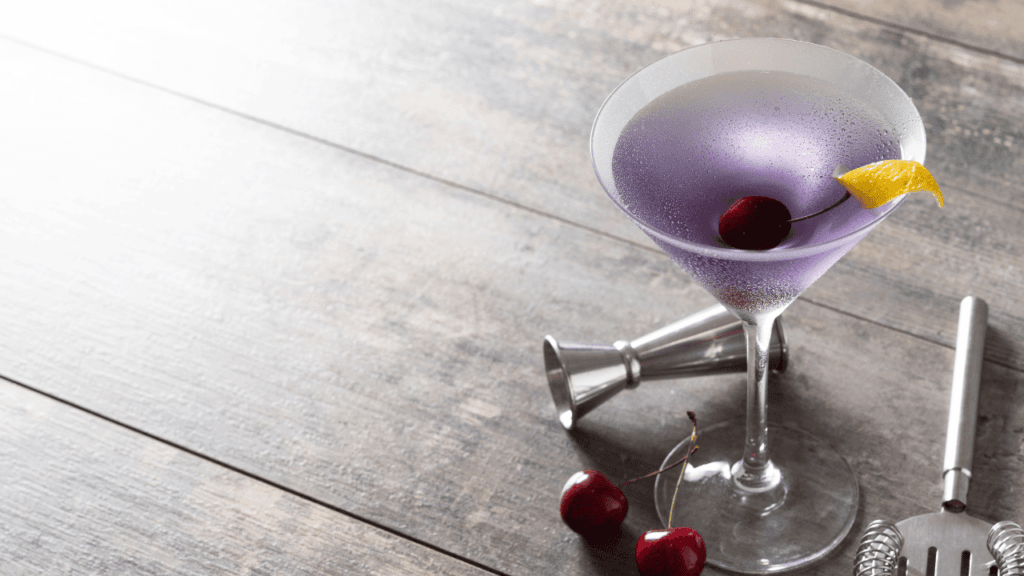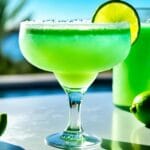How to Make a Gibson Cocktail? Welcome to our detailed guide on making the ultimate Gibson cocktail. Whether you’re a pro at mixing drinks or just starting, this guide will help you create an outstanding Gibson. It combines top tips with the finest ingredients for a great cocktail experience.
For an elevated experience, consider using Absolut Elyx, a high-quality single estate wheat vodka known for its lush and creamy texture.
You’ll learn a special recipe from Meaghan Dorman, a famous bartender. With Tanqueray No. 10 gin, Carpano bianco vermouth, and a bit of pickling liquid, you’ll master the perfect mix. Make a Gibson at home that will impress everyone at your next event.
Keep reading to find out how to prepare the best Gibson cocktail step by step. You’ll learn what makes it a beloved classic. This guide shows how versatile the Gibson cocktail is and makes you a pro at mixing it.
Meaghan Dorman’s recipe ensures a blend of flavors using Tanqueray No. 10 gin and Carpano bianco vermouth.
The signature garnish for a Gibson cocktail is a pickled onion.
Ideal serving involves a cold coupe glass to enhance the drinking experience.
The key steps include stirring the ingredients until cold for approximately 10 seconds.
Perfect balance is achieved with 2 1/2 ounces of gin or vodka and 1/2 ounce of dry vermouth.
Gibson Cocktail
4
servings30
minutes40
minutes300
kcalA classic cocktail made with gin and dry vermouth, served with a pickled onion.
Keep the screen of your device on
Ingredients
2.5 oz 2.5 gin
0.5 oz 0.5 dry vermouth
1 piece 1 cocktail onion
Directions
- Fill a mixing glass with ice cubes to effectively chill the ingredients while stirring. Ensure there’s enough space for smooth stirring.
- Pour the gin and dry vermouth into the mixing glass, balancing the desired flavor with the correct measures of each spirit.
- Stir the mixture gently but thoroughly with a bar spoon for at least 30 seconds, ensuring the entire drink is uniformly cooled.
- Strain the stirred cocktail into a chilled martini glass, carefully holding back the ice for a smooth, undiluted drink.
- Garnish the cocktail by adding a cocktail onion, which adds a unique and tangy flavor to the classic recipe.
Recipe Video
Nutrition Facts
- Total number of serves: 1
- Calories: 209kcal
- Cholesterol: 0mg
- Sodium: 1mg
- Potassium: 1mg
- Sugar: 0g
- Protein: 0g
- Calcium: 0mg
- Iron: 0mg
Introduction to the Classic Gibson Cocktail
The classic Gibson cocktail is known as a special martini with a pickled onion. Yet, it’s more than just that. Mixologist Meaghan Dorman says it’s like enjoying a martini and a snack together. This blends the joy of a cocktail with the tasty garnish.
The drink’s appeal is in its twist on the classic martini. When you first hear of a gin martini with cocktail onions, it might seem simple. However, its unique touch makes it a star in the cocktail scene. The Gibson includes 80-120ml of gin or vodka, 2-15ml of vermouth, and the famous pickled onion.
Start by chilling the gin or vodka and your glass for at least six hours. This makes sure the drink is super cold. Adding pickling vinegar makes the cocktail taste even better, giving it a special kick.
There are many stories about where the Gibson comes from. One tells of a man who used a pickled onion in his martini to stay sober, which made his drink easy to spot. The step-by-step Gibson cocktail guide shows that this drink changed the classic martini by skipping bitters and adding the unique garnish.
In 1948, the Gibson got a big nod in David Embury’s book, “The Fine Art of Mixing Drinks.” It made its own place among cocktails by being different and delighting people with its special taste and look.
The History of the Gibson Cocktail
The Gibson cocktail has a fascinating history full of interesting stories. It emerged as a unique twist on the Martini, catching the attention of many. Its special touch? A pickled onion and a few flavor tweaks.
Origins
The Gibson cocktail’s early days are as captivating as its taste. Some believe the drink was named after Charles Dana Gibson. He was known for the Gibson Girl drawings. It’s said he might have asked for a special Martini, leading to the onion garnish we know today. Others think a San Francisco businessman, Walter D.K. Gibson, started the trend when he put an onion in his drink to fight a cold in the 1890s.
The Gibson cocktail showed up in print in 1908. It was featured in “The World’s Drinks And How To Mix Them” by William Boothby. This early version combined French vermouth with dry English gin. Surprisingly, before Prohibition, the Gibson’s recipes didn’t always include an onion garnish. This shows how the cocktail has changed over time.
Evolution Over Time
The Gibson has evolved a lot since its early days. Unlike the original Martini, it skipped the orange bitters. Instead, it chose a pickled onion to top off the drink. This simple change has made the Gibson stand out.
Vodka is now a common choice instead of gin in Gibson cocktails. And the pickled onions are key. They’re not just onions. They’re cocktail onions soaked in a mix of vinegar, sugar, and spices. This makes their flavor a hit, especially with gin.
There are now many ways to enjoy a Gibson, like the Dirty Gibson. It swaps olive brine for onion brine. This mix includes gin, dry vermouth, and onion brine, showing how the cocktail can be adjusted for different tastes.
Despite all the changes, the Gibson cocktail remains a favorite. Its journey, from a simple mix to a creative cocktail, is a part of its charm. People love trying it with different bases and garnishes. The Gibson still wows both new fans and cocktail experts.
Essential Ingredients for a Gibson Cocktail
The Gibson cocktail is a classic martini variation that offers a unique twist on the traditional gin and dry vermouth mix. Instead of the typical olive garnish, the Gibson is garnished with a cocktail onion, which adds a briny flavor that enhances the overall taste. To make a Gibson, you’ll need quality gin, dry vermouth, and pickled onions for garnishing. This cocktail is often prepared by stirring ice in a mixing glass and then straining into a chilled coupe or cocktail glass. The delicate balance of flavors makes the Gibson an iconic drink, celebrated in cocktail books and enjoyed by martini lovers around the world.
The best Gibson cocktail starts with picking top-notch ingredients. Each one adds something special to this classy drink. It’s key to know why each part matters.
Gin Choices
Choose your gin wisely for a great Gibson. Tanqueray No. 10 brings a bright, citrus flavor. Or go with classic London dry gins for a well-rounded taste. The gin you pick changes how the cocktail tastes, influencing its unique style.
Vermouth Varieties
Vermouth is key in a Gibson. A top-notch dry vermouth like Dolin or a bianco like Carpano adds an herbal touch. Bianco vermouth’s sweet, complex flavors mix well with the gin. These choices blend to make every sip of the Gibson exceptional.
The Importance of Pickled Onions
Pickled onions make the Gibson stand out from other martinis. They’re tiny, pearl onions soaked in vinegar, sugar, and special spices. These onions add a bit of sweetness and a rich taste that works wonders with the gin. The drink ends up perfectly balanced and unforgettable.
How to Make a Gibson Cocktail
The Gibson is a classic cocktail that offers a unique twist on the traditional martini, distinguished by its distinctive garnish—a pickled onion rather than the usual olive or lemon twist. This iconic drink is made with gin and dry vermouth, creating a delightful blend that showcases the flavor of the gin. To craft the perfect Gibson cocktail, you’ll need a mixing glass filled with ice, where you’ll stir the ingredients before straining them into a chilled cocktail glass or coupe. The use of cocktail onions adds an umami undertone, making it a favorite in cocktail recipes. Whether you prefer a classic Gibson or a dirty variation, this drink is sure to impress with its briny notes and sophisticated presentation.
Creating a Gibson cocktail is like art. It needs you to pay close attention to each step. Following a step-by-step Gibson cocktail guide will help you get the flavors just right. Let’s dive into how to make a seamless Gibson cocktail.
Step-by-Step Preparation
Chill the Glass: First, fill a glass with ice and water to chill it, then put it in the freezer. This keeps your drink cold.
Mixing Ingredients: Next, mix 2 1/2 ounces of gin or vodka with 1/2 ounce of dry vermouth in a mixing glass.
Stirring: Then, add ice cubes into the mixing glass and stir gently for about 30 seconds. You want it well-chilled.
Straining: Finally, strain the mix into your chilled cocktail glass.
Garnishing: Top your Gibson with a cocktail onion. It’s a pickled pearl onion that’s traditional.
Every step must be done precisely to make this Gibson cocktail perfectly. Keep at it, and you’ll make these without even thinking about it.
Common Mistakes to Avoid
Over-stirring: Stirring too much makes the drink watery. Stir until it’s cold enough, not more.
Misbelling Ingredients: It’s crucial to use the right mix of gin or vodka with dry vermouth. The classic mix is the best.
Ignoring the Garnish: A cocktail onion is a must. It’s what makes a Gibson special with its unique taste.
Avoiding these mistakes helps you get better at making a Gibson cocktail. For more expert advice on this classic drink, check out in-depth guides.
Element | Details |
|---|---|
Gin or Vodka | 2 1/2 ounces |
Dry Vermouth | 1/2 ounce |
Garnish | Cocktail Onion |
How to Make a Gibson Cocktail Differentiating the Gibson from the Martini
The Gibson cocktail is a classic drink that stands out from the traditional martini, primarily through its unique garnish. While both drinks are made with gin and dry vermouth, the Gibson is garnished with a cocktail onion instead of the usual olive or lemon twist. This substitution adds a distinct briny flavor, making it a favorite for those who enjoy a savory twist on the classic martini recipe. To make a Gibson, you’ll need to mix gin and vermouth in a mixing glass with ice, then strain into a chilled coupe glass. The choice of using a pickled onion as a garnish not only enhances the drink’s presentation but also contributes an umami undertone. Whether you prefer a dirty martini or a classic gibson, this cocktail offers a refreshing variation that highlights the flavor of the gin. For the best results, opt for a quality London dry gin and experiment with different brands of vermouth to find your perfect Gibson cocktail recipe.
The Gibson and the Martini may seem similar, but they have key differences. The Gibson is known for its special taste and the pickled onion on top.
Flavor Profiles
The Gibson has a salty taste because of the onion on top. This goes well with the flavors of the gin in it. The Martini, on the other hand, tastes cleaner. It uses either lemon or olive for a fresh or salty flavor.
Garnish Distinctions
One big difference is what they put on top. The Gibson has a pickled onion. It makes the drink look interesting and taste special. The Martini chooses an olive or lemon twist. It changes the taste and feel of the cocktail completely.
Expert Tips for the Perfect Gibson
Crafting the perfect Gibson cocktail is an art. It’s not just a matter of following a recipe. It takes insights and understanding. Top mixologists, like Meaghan Dorman, have shared their tips to help you mix it up like a pro.
Gin and Vermouth Selection: Choose gins with bold herbal notes. Brands like Roku, Hendricks, and Beefeater work well. The best Gibson cocktail recipe suggests equal parts dry gin and vermouth. But, feel free to tweak this to match your taste.
Perfecting the Garnish: The Gibson stands out with its pickled onion twist. Use one onion for each drink, then taste and adjust. If you want just a hint of onion, cut the pickled onion in half or lightly stir it in.
Stirring Technique: Mixing a Gibson is an art too. Stir your drink gently about 15 times or until it’s chilled but not too watery. This step is crucial for a balanced taste and temperature.
Glassware: Make sure your glass is nice and cold. A coupe glass is ideal and it adds a touch of elegance. It also keeps your cocktail cooler for longer.
Optimal Time and Temperature: It should take about 3 minutes to prepare your Gibson. Creating just the right coldness and dilution is key. This step makes sure all the flavors work together perfectly.
Key Aspect | Recommendation |
|---|---|
Gin Brand | Roku, Hendricks, Beefeater, Aviation, Plymouth, Tanqueray |
Gin to Vermouth Ratio | Equal parts, adjustable to taste |
Garnish | Pickled onion, adjustable flavor by slicing or stirring with the onion |
Stirring | 15 rotations, until chilled |
Glassware | Chilled coupe glass |
Follow these expert Gibson cocktail tips and pay attention to the details. You’ll mix a Gibson that hits the mark on taste, coldness, and style.
Popular Variations of the Gibson Cocktail
The Gibson is a classic cocktail that stands out as a unique variation of the traditional martini. This drink is made with gin and dry vermouth, typically garnished with a cocktail onion instead of the usual olive or lemon twist. T
Popular Variations of the Gibson Cocktail
The classic Gibson cocktail is loved by many for its mix of gin and vermouth. It’s garnished with a pickled onion. Many versions of this drink exist. Every Gibson cocktail variation keeps the original charm but with different tastes. So, whether you like it savory or sweet and dry, there’s a Gibson for you.
Savory Gibson
Do you like cocktails with a big, savory punch? Then the savory Gibson is for you. It boosts the classic drink’s briny onion flavor by adding juniper berries and garlic. It turns the drink into a rich, complex treat perfect for pairing with food.
Ingredients | Quantity |
|---|---|
Fresh white pearl onions | 1 pound |
Rice vinegar | ¾ cup |
Water | ¾ cup |
Granulated sugar | ¼ cup |
Kosher salt | 1 tablespoon |
Black peppercorns | 1 tablespoon |
Juniper berries | 1 tablespoon |
Garlic clove | 1 medium |
Gin | 8 ounces |
Dry vermouth | 4 ounces |
Onion pickling liquid | 1 ounce |
Ice | 8 cups |
Sweet and Dry Gibson
Maybe you’re into something sweeter or drier. The sweet and dry Gibson shines here. By playing with the vermouth, you can get more sweetness or a crisper feel. These tweaks show how versatile the Gibson cocktail is, fitting many taste buds.
Trying out these Gibson twists brings fun and a deeper love for the drink. Whether you fancy a savory or a sweet and dry option, they keep the Gibson fresh and adored by all.
Choosing the Right Glassware for Serving
Choosing the right Gibson cocktail glass matters a lot. It’s not just about the look. The glass affects how you enjoy the drink. Martini glasses are perfect for Gibsons. They look good and help the drink smell better as you sip.
Choosing the right glass makes serving a Gibson cocktail better. Here’s a simple guide to the best glasses for different drinks:
Glass Type | Recommended Cocktails |
|---|---|
Whiskey Glasses | Penicillin, Negroni, Sazerac, White Russian, Whiskey Sour, Pisco Sour |
Highball Glasses | Gin & Tonic, Dark n’ Stormy, Tequila Sunrise, Long Island Iced Tea, Cuba Libre, Cape Cod |
Martini Glasses | Martinins, Gimlet, Gibson, Manhattan |
Tall Glasses | Tom Collins, Bloody Mary |
Columbus Martini Glasses | Margarita, Cosmopolitan, Daiquiri, Expresso Martini |
Miami Drinking Glasses | Screwdriver, Bloody Mary, Mojito, Mint Julep |
Classic Champagne Flute Glasses | Prosecco, Kir Royale, Sparkling White Wine, French 75, Bellini, Mimosa |
Seattle Glass Set | Brandy, Cognac, Armagnac, Pisco, Calvados, Scotch, Dark Rum |
Irish Coffee Glasses | Irish Coffee, Hot Buttered Rum, Hot Toddy, Wassail |
Martini glasses are the top pick for Gibsons. They make the drink look great. They also bring out the best in the gin and vermouth mix. Knowing about Gibson glassware improves how the drink looks and tastes. It makes each sip feel fancy.
The Role of the Pickled Onion in a Gibson Cocktail
The Gibson cocktail pickled onion isn’t just a garnish. It’s a key part of what makes this classic cocktail great. This drink is different because it uses a pickled onion, not olives or lemons. In 1908, the idea of using an onion in a Gibson was shared in a book.
A Gibson has 2 1/2 ounces of gin or vodka and 1/2 ounce of vermouth. It’s known for being simple, without any bitters like early martinis. Not having bitters shows how important the Gibson cocktail pickled onion is to its taste.
Bartenders today are pickling special onions for Gibsons. They pickle these small onions in a mix of vinegar, sugar, and spices. In the mix, you’ll find things like vinegar, salt, sugar, vermouth, and more. This special pickling process adds a unique sweet and savory taste to the onion, making it ideal for the drink.
The classic Gibson garnish has a big place in history and taste. Even as the Gibson drink changed to have vodka, not just gin, the onion stayed. The onion balances out the drink’s dryness, making it a classic cocktail choice.
Knowing how important the Gibson cocktail pickled onion is can help any drink fan. It’s more than a garnish; it’s the Gibson’s core.
Serving and Presentation Ideas
Serving a Gibson cocktail is more than just pouring it. Think about using a chilled martini or coupe glass. The right glass makes the cocktail look better and keeps it cool. It also shows off the cocktail’s color and clarity.
Choosing a nice glass is key to a stunning Gibson cocktail presentation. A martini or coupe glass adds a classy feel. Don’t forget to chill the glass beforehand. This keeps your drink cold and perfect until the end.
The garnish is important when making a Gibson cocktail. Typically, you’d add 1 or 2 pickled cocktail onions. They look and taste good. You can put them at the glass’s bottom or on a cocktail pick for a fancy touch. This makes them easy to eat while enjoying your drink.
Element | Recommendation | Details |
|---|---|---|
Glassware | Chilled Martini or Coupe Glass | Keeps the drink at the ideal temperature and enhances visual appeal. |
Garnish | Pickled Cocktail Onions | Provides a savory twist and can be displayed creatively. |
Presentation | Polished Cocktail Picks | Adds a touch of sophistication and eases the garnish’s retrieval. |
The way you present a Gibson cocktail matters a lot. To really wow people, use fancy cocktail picks, special glassware, or silver trays. Places like Maison Premiere are known for their beautiful setups. They use detailed glassware and fancy jiggers, showing real elegance.
It doesn’t matter if you’re out at a bar or hosting friends, paying attention to how you serve and present your Gibson is crucial. You want to turn a simple drink into something special. The idea is to create a journey, starting with the eyes and ending with a tasty finish.
How to Make a Gibson Cocktail: The Ultimate Recipe Guide
The Gibson cocktail stands as a sophisticated twist on the classic martini, distinguished by its unique garnish of pickled onion instead of the traditional olive or lemon twist. This elegant drink combines the botanical notes of gin with dry vermouth to create a cocktail that’s both refined and distinctive. Whether you’re a seasoned mixologist or a curious home bartender, mastering the Gibson offers an opportunity to expand your cocktail repertoire with a drink that has graced sophisticated establishments since the early 20th century. In this comprehensive guide, we’ll explore everything you need to know about crafting the perfect Gibson martini.
What is a Gibson Cocktail and How is it Different from a Classic Martini?
At first glance, a Gibson cocktail might appear identical to a classic martini, served in the same elegant stemware and featuring the same crystal-clear appearance. However, the Gibson distinguishes itself by being garnished with a cocktail onion instead of an olive or lemon twist. This seemingly minor substitution transforms the drinking experience entirely, adding a subtle savory note that complements the botanical profile of the gin and dry vermouth mixture. While both drinks share the same basic formula, the Gibson’s unique garnish creates a completely different flavor profile, making it a distinct classic cocktail in its own right.
The Origin Story of the Gibson Martini
The Gibson’s history is as intriguing as its taste. Several origin stories exist, but perhaps the most widely accepted traces back to businessman Walter D.K. Gibson in the early 1900s. According to cocktail lore, Gibson frequented the Players Club in New York City where he challenged bartender Charlie Connolly to improve upon the classic martini. Connolly’s innovation was simple yet brilliant: replacing the olive with a pickled onion. Another popular account attributes the drink to San Francisco businessman Walter Gibson, who supposedly preferred his martinis with an onion garnish to distinguish his water from his colleagues’ alcohol during business lunches. The Gibson also appears in the 1908 cocktail book by William “Cocktail” Boothby, cementing its place in the pantheon of classic drinks. Regardless of its exact origins, by the early 20th century, the Gibson martini had established itself as a sophisticated alternative to the traditional gin martini.
Key Differences Between a Gibson and a Classic Gin Martini
While both the Gibson and classic martini are made with gin and dry vermouth, several key differences set them apart. The most obvious distinction is the garnish—Gibsons are garnished with a pickled onion, while classic martinis typically feature an olive or lemon twist. This seemingly minor change significantly impacts the flavor profile. The cocktail onion imparts a subtle sweetness and acidity that interacts with the gin and vermouth in ways an olive cannot. Additionally, some bartenders adjust the ratio of gin and dry vermouth slightly when crafting a Gibson, often favoring a slightly less dry approach than with a traditional dry martini. Traditional martini recipes might call for a 5:1 or even 10:1 ratio of gin to vermouth, while many Gibson recipes employ a more balanced 3:1 or 4:1 ratio, allowing the vermouth’s herbal qualities to stand up to the pickled onion’s flavors. This balance creates a more complex interplay of flavors that distinguishes the Gibson as more than just a martini with a different garnish.
Why the Pickled Onion Garnish Makes All the Difference
The pickled onion is far more than a decorative element—it fundamentally transforms the Gibson cocktail experience. As you sip a Gibson, the subtle aroma of the onion garnish interacts with the botanical notes of the gin, creating a sensory experience that’s entirely different from a classic martini. The slight vinegar tang and sweetness from the pickle brine perfumes each sip, while the onion itself offers a savory counterpoint to the crispness of the drink. Some connoisseurs even eat the cocktail onion after finishing their Gibson, appreciating how it has absorbed the gin and vermouth flavors. Historically, the use of onion in place of olive or lemon also served a practical purpose—in prohibition-era speakeasies, a Gibson was easily distinguishable from a glass of water, allowing bartenders to quickly identify drink orders. Today, this distinctive garnish continues to set the Gibson apart as a sophisticated choice for discerning drinkers who appreciate its unique flavor profile.
What Ingredients Do You Need for an Authentic Gibson Cocktail Recipe?
Creating an authentic Gibson cocktail requires careful selection of a few key ingredients. The foundation of any Gibson recipe lies in the quality of its components: gin, dry vermouth, and cocktail onions. Unlike more complex cocktails that might hide subpar ingredients behind strong flavors, the Gibson’s simplicity means that each element must be carefully chosen. The standard ratio for a traditional Gibson is typically 5 parts gin to 1 part dry vermouth, though this can be adjusted according to personal preference. Some bartenders add a dash of onion brine for a slightly “dirty” Gibson variation. When assembling your ingredients, remember that the clarity and clean taste of a Gibson relies on using premium spirits and proper chilling techniques. Let’s examine each key component to ensure your Gibson cocktail reaches its full potential.
Selecting the Right Gin for Your Gibson
The gin forms the backbone of any Gibson cocktail, making its selection crucial to the drink’s success. Traditional Gibson recipes call for London Dry gin, which provides a robust juniper character and botanical complexity that stands up well to the pickled onion garnish. When selecting a gin for your Gibson, consider those with a balanced botanical profile—gins that are too floral might clash with the savory onion, while those that are too juniper-forward could overwhelm the vermouth’s subtle qualities. Premium brands like Tanqueray, Beefeater, or Plymouth work exceptionally well in a Gibson, offering the perfect foundation for this classic drink. For a more contemporary approach, some mixologists experiment with new-wave gins that feature more citrus or spice notes, which can create interesting variations on the classic Gibson. Regardless of your choice, ensure you’re using a quality gin that you’d enjoy neat, as its character will shine through clearly in this minimalist cocktail.
Choosing the Perfect Dry Vermouth
Dry vermouth is the often-underappreciated component that brings harmony to a Gibson cocktail. This fortified wine infused with herbs and botanicals adds complexity and depth to the gin base. For an authentic Gibson, select a quality dry vermouth like Dolin, Noilly Prat, or Cocchi Americano. Fresh vermouth is essential—unlike spirits, vermouth oxidizes once opened, so always refrigerate after opening and use within a month for optimal flavor. The ratio of gin and dry vermouth can be adjusted based on preference; a 5:1 ratio creates a drier Gibson, while a 3:1 ratio allows the vermouth’s herbal notes to shine through more prominently. Some Gibson enthusiasts even enjoy experimenting with a rinse of vermouth—coating the chilled cocktail glass with vermouth before discarding the excess—for an extremely dry variation. Whatever approach you take, remember that vermouth isn’t merely an additive but a crucial ingredient that deserves as much consideration as the gin itself.
Finding or Making Quality Cocktail Onions
The cocktail onion is the signature element that transforms a martini into a Gibson, making its selection particularly important. Commercial cocktail onions are widely available, but many mixologists prefer to make their own for superior flavor. When purchasing pre-made cocktail onions, look for small pearl onions preserved in a clear brine rather than those with artificial coloring. For the ultimate Gibson experience, consider making homemade pickled onions. Start with fresh pearl onions, peeled and blanched briefly in boiling water. Create a pickle brine with white vinegar, sugar, salt, and spices such as bay leaf, peppercorns, and a touch of mustard seed. Some bartenders add a splash of vermouth to the brine to complement the cocktail’s flavor profile. Homemade pickled onions typically need to mature for at least three days before reaching optimal flavor, though some recipes suggest aging for up to two weeks for the best results. Whether store-bought or homemade, ensure your cocktail onions are fresh and flavorful to properly garnish your Gibson.
How to Make a Gibson Cocktail: Step-by-Step Instructions
Creating the perfect Gibson cocktail requires attention to detail and proper technique. This classic drink relies on simplicity, making each step crucial to the final result. Begin by gathering all your ingredients: quality gin, dry vermouth, and cocktail onions. You’ll also need proper tools: a mixing glass, bar spoon, strainer, and a chilled cocktail glass or coupe. The Gibson is traditionally stirred, not shaken, to maintain clarity and the proper dilution level. Temperature is critical—a properly chilled Gibson should be ice-cold but not over-diluted. Follow this step-by-step guide to craft a Gibson worthy of the most discerning palate, paying special attention to the stirring technique, glassware temperature, and garnish presentation.
Proper Mixing Techniques for the Perfect Gibson
The key to a sublime Gibson lies in the mixing technique. Begin by filling a mixing glass with ice—ideally large, clear cubes that will chill without excessive dilution. Add 2½ ounces of gin followed by ½ ounce of dry vermouth (adjusting this ratio to taste). Using a bar spoon, stir the mixture gently but thoroughly. The proper stirring technique involves placing the spoon against the glass wall and pushing it around the perimeter, allowing the back of the spoon to do the work. Stir for approximately 30 seconds or until the mixing glass becomes frosty on the outside. This method properly chills and slightly dilutes the cocktail without introducing air bubbles or cloudiness that would result from shaking. The goal is to reach a temperature of around 23°F (-5°C), which provides the optimal drinking experience. Once properly stirred, strain into a chilled cocktail glass using a julep strainer or fine mesh strainer to ensure no ice chips make it into the final drink. This careful attention to the mixing process ensures your Gibson achieves the silky texture and crystal clarity that are hallmarks of this classic cocktail.
The Importance of Chilling Your Cocktail Glass
One cannot overstate the importance of properly chilling your cocktail glass when preparing a Gibson. A room-temperature glass will quickly warm your meticulously prepared cocktail, diminishing its crispness and allowing the alcohol vapors to become too pronounced. Ideally, place your cocktail glass or coupe in the freezer for at least 30 minutes before serving. If time is limited, an alternative method is to fill the glass with ice and cold water while preparing the cocktail, then empty and dry it just before straining the drink. The goal is to achieve a glass temperature of approximately 10°F (-12°C). This properly chilled glass not only keeps your Gibson at the optimal drinking temperature longer but also contributes to the overall sensory experience—there’s something undeniably luxurious about the frost that forms on the outside of a well-chilled glass. Additionally, the cold glass helps to maintain the delicate balance between the gin and vermouth, preventing the alcohol from becoming too dominant as it might in a warmer vessel.
How to Garnish with Pickled Onion Like a Professional
The final touch—and defining characteristic—of a Gibson is its pickled onion garnish. After you strain into a chilled cocktail glass, it’s time to add this distinctive element. For a professional presentation, use cocktail onions on a pick rather than dropping them directly into the drink. Most traditionalists prefer a single onion, believing that multiple onions can overwhelm the drink’s delicate balance. However, some establishments serve Gibsons garnished with a pickled onion trio, creating an attractive visual. When placing the garnish, gently rest the pick across the rim of the glass or carefully submerge the onion in the cocktail. If using particularly flavorful homemade pickled onions, consider serving the Gibson with the onion alongside rather than in the drink, allowing the drinker to control how much of the onion’s flavor infuses into the cocktail. For an elegant touch at home, invest in proper cocktail picks—silver, gold, or decorative options elevate the presentation beyond the standard wooden toothpick, making your homemade Gibson look as sophisticated as any you’d find in a high-end cocktail bar.
What Variations of the Gibson Martini Can You Try at Home?
While the classic Gibson cocktail recipe is perfect in its simplicity, numerous variations offer interesting twists on this iconic drink. Experimenting with different approaches allows you to customize the Gibson to your personal taste while maintaining its essential character. From adjusting the ratio of gin and vermouth to incorporating alternative spirits or additional flavoring elements, these variations can breathe new life into this classic cocktail. Whether you prefer a more savory profile, a sweeter approach, or simply want to explore modern interpretations, these Gibson variations offer excellent starting points for expanding your cocktail repertoire. Each maintains the drink’s essential elegance while introducing subtle changes that can transform the Gibson experience.
How to Make a Dirty Gibson with Onion Brine
The Dirty Gibson represents one of the most popular variations on the classic recipe, incorporating onion brine for an intensified savory quality. To make a Dirty Gibson, begin with the standard approach of combining gin and dry vermouth in your preferred ratio, but add ¼ to ½ ounce of the pickle brine from your cocktail onions. This addition creates a slightly cloudy appearance and introduces a pronounced briny flavor that complements the botanical notes of the gin. The onion brine adds both salinity and a subtle sweetness that transforms the drink’s profile, making it particularly appealing to those who enjoy savory cocktails. Some bartenders recommend slightly reducing the vermouth when making a Dirty Gibson to prevent the drink from becoming too wet. For an extra-dirty version, increase the brine to a full ounce, but be cautious not to overwhelm the gin’s nuances. Garnish as usual with a cocktail onion or, for an intensely savory experience, use additional onions. The Dirty Gibson offers a fascinating middle ground between a traditional Gibson and a Dirty Martini, incorporating elements of both these classic drinks.
Vodka Gibson: A Modern Alternative
For those who prefer a cleaner, less botanical base spirit, the Vodka Gibson offers a contemporary alternative to the traditional gin version. Similar to how a vodka martini emerged as a variation on the classic gin martini, the Vodka Gibson substitutes a premium vodka for gin while maintaining the same vermouth ratio and signature pickled onion garnish. This substitution creates a cocktail with a more neutral canvas that allows the subtle flavors of the vermouth and onion to take center stage. To prepare a Vodka Gibson, combine 2½ ounces of quality vodka with ½ ounce dry vermouth in a mixing glass with ice and stir until properly chilled. Strain into a chilled cocktail glass and garnish with a pickled onion. Some mixologists argue that with vodka’s more subtle flavor profile, the choice of vermouth becomes even more critical—consider experimenting with different vermouths to find your preferred combination. The Vodka Gibson gained significant popularity during the 1990s and early 2000s, alongside the broader trend toward vodka-based cocktails, and remains a staple option for those who find traditional gin drinks too intensely botanical.
Sweet vs. Dry Gibson Variations
While the classic Gibson is made with dry vermouth, creating a relatively crisp and herbaceous profile, some bartenders experiment with sweet vermouth variations. A Sweet Gibson (sometimes called a Sweet Martini with onion garnish) substitutes sweet vermouth for dry, resulting in a richer, more complex cocktail with notes of caramel, herbs, and subtle spice that interact interestingly with the pickled onion. For those who prefer something in between, the Perfect Gibson uses equal parts sweet and dry vermouth, creating a balanced profile that offers both crispness and depth. Another approach is the Extra Dry Gibson, which reduces the vermouth to a mere rinse of the glass or a scant few drops, letting the gin take absolute center stage. Some contemporary bartenders even experiment with blanc vermouth (a style between sweet and dry) for a Gibson with subtle sweetness that doesn’t overwhelm. Each of these variations maintains the essential character of a Gibson through the signature cocktail onion garnish while allowing for customization of the drink’s sweetness level and complexity. When experimenting with these variations, you might find that different garnish approaches work better with each style—perhaps multiple onions for a Sweet Gibson or a single on
How to Make a Gibson Cocktail
The Gibson is a classic cocktail that stands out as a variation of the traditional martini. This refreshing drink is made with gin and dry vermouth and is uniquely garnished with a cocktail onion instead of the usual olive.
Ingredients
- 2 ounces gin
- 1 ounce dry vermouth
- Cocktail onions (pickled onion garnish)
- Ice
Instructions
- Start by chilling your cocktail glass. You can strain into a chilled coupe or martini glass.
- In a mixing glass filled with ice, combine the gin and dry vermouth.
- Stir gently to mix the ingredients and chill the drink thoroughly.
- Once mixed, strain into the chilled cocktail glass.
- Garnish with a cocktail onion, adding a touch of briny flavor to your Gibson.
Tips for the Best Gibson
For a unique twist, consider using onion brine to add an umami undertone to your drink. You can also experiment with different types of gin to find the perfect flavor profile that suits your taste. Remember, the essence of a Gibson lies in its simplicity, so keep your ingredients fresh for the best results.
Conclusion
How to Make a Gibson Cocktail? The journey through the classic Gibson cocktail has been eye-opening. It’s a chance to dive into mixology’s sophisticated side. This drink has a rich history from the 1890s and is known for the simple olive or onion on top. The Gibson shows how cocktails can also be art, with its unique taste and look. It’s made with just gin, dry vermouth, and a touch of your favorite garnish.
For a Gibson at home, pick the best gin and vermouth that suit your taste. Gins like Roku, Hendricks, or Tanqueray can be perfect. And for the vermouth, Noilly Prat or Dolin are great choices. Don’t be afraid to tweak it. Add more onions or try a different vermouth amount. This makes the drink truly yours.
Making a Gibson means you’re both a scientist and an artist. Everything from the glass to how you mix it matters. Chilling your glass properly is key. Deciding to shake or stir is your choice. Every detail, even the garnish, plays a part in the final drink. Embrace this passion and perfect your Gibson. It will keep its special place in the story of cocktails. Bring elegance and tradition to your cocktail making. And watch your skills grow.

